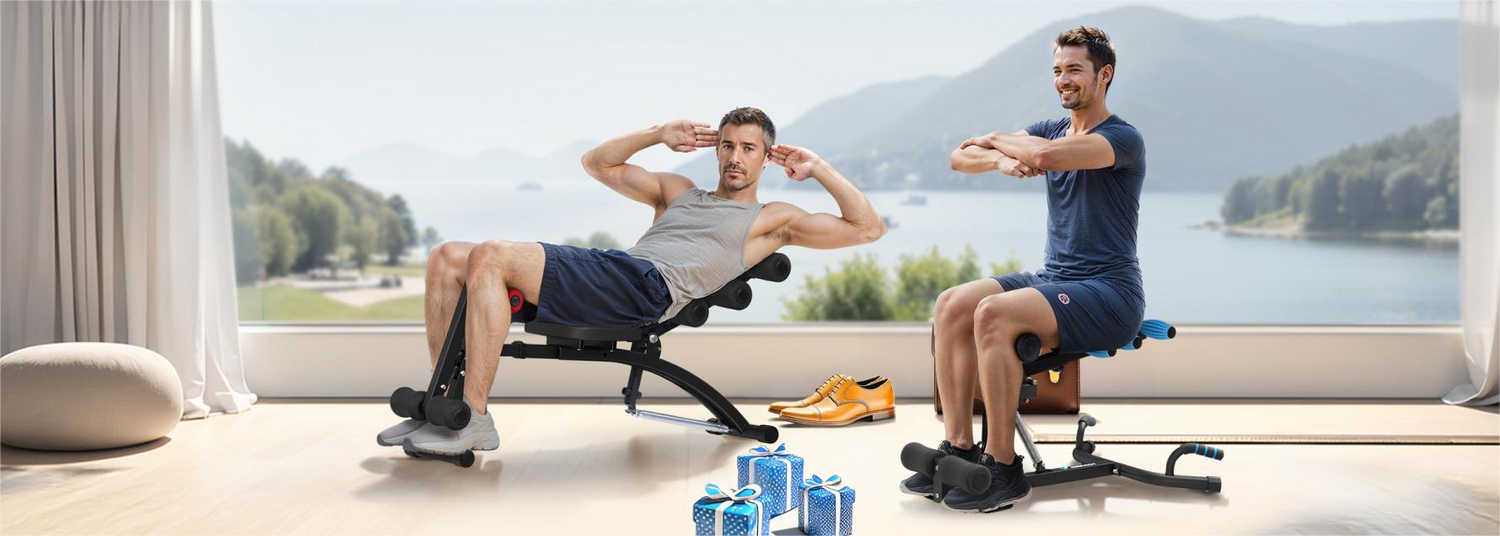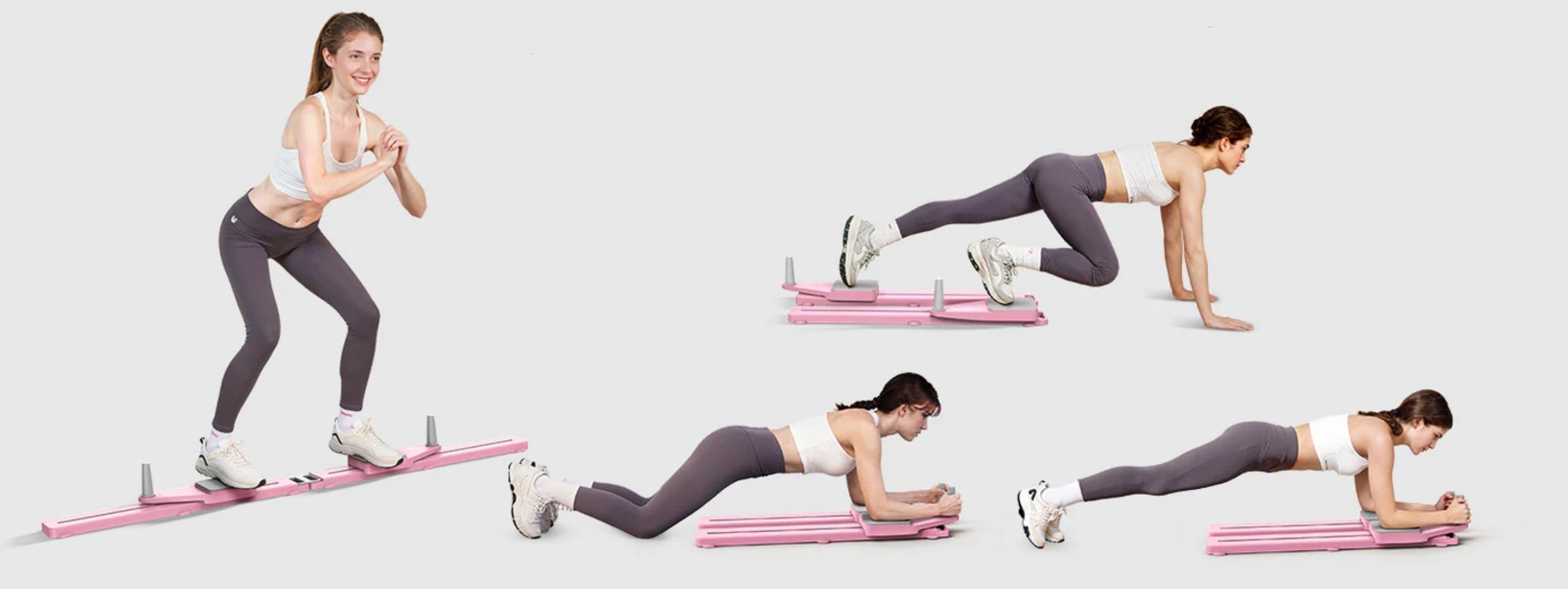When we talk about building strength and muscle, one principle stands above all others: progressive overload. Whether you're new to fitness or looking to break through a plateau, understanding and applying this fundamental concept can transform your results. Let's explore how you can harness the power of progressive overload to achieve your fitness goals.
What Is Progressive Overload?
Progressive overload is the gradual increase of stress placed on your body during exercise training. This principle forms the foundation of all successful strength and muscle-building programs. When we consistently challenge our muscles beyond their current capacity, they adapt by becoming stronger and more resilient.
The concept dates back to ancient Greece, where wrestler Milo of Croton reportedly carried a calf daily as it grew into a bull, progressively increasing the weight he lifted. Today, research shows that progressive overload is essential for continuous improvement, with studies indicating that muscle growth occurs when we expose our bodies to increasingly challenging stimuli over time.
Your body is remarkably adaptive. When you perform the same workout repeatedly without increasing the challenge, your muscles stop growing because they've already adapted to that level of stress. Progressive overload ensures you're always pushing slightly beyond your comfort zone, triggering the physiological responses necessary for growth and improvement.
Key Benefits of Progressive Overload
Implementing progressive overload in your training routine delivers remarkable benefits that extend far beyond simple muscle growth. First and foremost, you'll experience consistent strength gains as your muscles adapt to handle heavier loads and more challenging movements. This increased strength translates directly into improved performance in daily activities and sports.
Beyond strength, progressive overload significantly enhances muscle hypertrophy. When we gradually increase training demands, muscle fibers experience micro-tears that repair and grow back stronger and larger. Studies published in the Journal of Strength and Conditioning Research demonstrate that progressive overload protocols can increase muscle mass by up to 40% in previously untrained individuals over 12-16 weeks.
Perhaps most importantly, this training principle helps prevent the dreaded fitness plateau. Many people experience frustration when their progress stalls despite consistent effort. Progressive overload provides a systematic approach to continually challenge your body, ensuring ongoing improvements in strength, endurance, and overall fitness. Additionally, the structured nature of progressive overload training helps reduce injury risk by allowing gradual adaptation rather than sudden, dramatic increases in training intensity.
5 Ways to Apply Progressive Overload
Increase Weight or Resistance
The most straightforward method involves gradually adding more weight to your exercises. For barbell and dumbbell exercises, aim to increase the load by 2.5-5% when you can comfortably complete all prescribed sets and reps with good form. Our MERACH Adjustable Dumbbell Set makes this progression seamless, allowing you to make small weight adjustments without cluttering your home gym with multiple dumbbells. Start with a weight that challenges you for 8-12 repetitions, and once you can complete 12 reps easily across all sets, it's time to increase the resistance.
Add More Repetitions
When increasing weight isn't practical or available, adding repetitions provides an excellent alternative for progression. If you're performing 3 sets of 8 squats, work toward 3 sets of 10, then 12, before increasing the weight. This method works particularly well with bodyweight exercises or when using equipment like our MERACH Deep Squat Machine, which provides consistent resistance while allowing you to focus on perfecting your form and increasing your rep count.
Increase Training Volume
Volume refers to the total amount of work performed, calculated as sets × reps × weight. You can increase volume by adding extra sets to your workout. For example, progressing from 3 sets to 4 sets of an exercise increases your total training volume by 33%. This approach works exceptionally well for compound movements and when using versatile equipment like our Multi-Functional Adjustable Ab Trainer, which allows you to target multiple muscle groups with varying set schemes.
Reduce Rest Periods
Decreasing rest time between sets intensifies your workout without changing the exercises themselves. If you typically rest 90 seconds between sets, try reducing it to 75 seconds, then 60 seconds over several weeks. This method improves muscular endurance and cardiovascular fitness while maintaining training intensity. It's particularly effective when combined with circuit-style training using equipment like our Folding Vertical Cardio Exercise Climber.
Improve Exercise Difficulty
Progression doesn't always mean adding weight. You can make exercises more challenging by modifying the movement pattern, tempo, or range of motion. For instance, elevating your feet during push-ups, performing slower eccentric movements, or increasing the range of motion in squats all represent forms of progressive overload that enhance muscle activation and growth potential.
Sample Progressive Overload Workout Plan
Here's a practical 4-week progressive overload plan for beginners focusing on full-body strength:
Week 1-2: Foundation Phase
- Monday: Upper Body (3 sets × 8 reps, 90-second rest)
- Wednesday: Lower Body (3 sets × 10 reps, 90-second rest)
- Friday: Full Body Circuit (2 rounds, 60-second rest between exercises)
Week 3-4: Progression Phase
- Increase weight by 5-10% OR add 2 reps per set
- Reduce rest periods by 15 seconds
- Add one additional set to primary exercises
| Exercise | Week 1-2 | Week 3-4 |
|---|---|---|
| Squats | 3×10 @ bodyweight | 3×12 @ bodyweight OR 3×10 with resistance |
| Push-ups | 3×8 | 3×10 OR 3×8 with feet elevated |
| Rows | 3×8 @ 20lbs | 3×10 @ 20lbs OR 3×8 @ 25lbs |
Remember to track your progress in a workout journal, noting weights, reps, and how each session feels. This data becomes invaluable for planning future progressions and identifying when you're ready to advance.
Common Mistakes to Avoid
Progressing too quickly ranks as the most frequent error we see in eager fitness enthusiasts. While enthusiasm is admirable, jumping from 50-pound squats to 100-pound squats in a week invites injury and burnout. The general rule suggests increasing weight by no more than 10% per week for upper body exercises and 15% for lower body movements. Your body needs time to adapt to new stresses, and rushing this process undermines long-term progress.
Neglecting proper form becomes increasingly dangerous as weights increase. We often observe people sacrificing technique to lift heavier weights, but this approach limits muscle activation and dramatically increases injury risk. Always prioritize perfect form over impressive numbers. If you can't maintain proper technique throughout all repetitions, the weight is too heavy. Consider using equipment like our R07 Squat Assist Machine which helps maintain proper form while allowing progressive overload through adjustable resistance levels.
Ignoring recovery represents another critical mistake that sabotages progress. Progressive overload only works when paired with adequate rest and nutrition. Your muscles grow during recovery periods, not during workouts. Aim for 7-9 hours of quality sleep, consume adequate protein (0.7-1g per pound of body weight), and include at least one full rest day per week. Without proper recovery, you're simply breaking down muscle without allowing it to rebuild stronger.
Equipment That Supports Progressive Overload
Selecting the right equipment can significantly enhance your ability to apply progressive overload principles effectively. Our MERACH Adjustable Core Ab Trainers offer multiple resistance levels, allowing you to gradually increase difficulty as your core strength improves. The three resistance settings provide clear progression markers, making it simple to track and implement overload in your ab training routine.
For those seeking versatile options, our 2444 MERACH Adjustable Dumbbell eliminates the need for multiple weight sets while providing precise load adjustments. This space-saving solution allows you to make small weight increases crucial for sustainable progressive overload, particularly important for smaller muscle groups that adapt more quickly to training stimuli.
The beauty of quality fitness equipment lies in its ability to provide consistent, measurable progression. Whether you're performing bodyweight movements with added resistance or traditional strength exercises, having reliable equipment ensures you can focus on the most important aspect: challenging your body progressively and safely.
Tracking Your Progress
Effective progress tracking transforms progressive overload from guesswork into science. Research indicates that individuals who track their workouts are 2.5 times more likely to achieve their fitness goals compared to those who don't. Start by recording basic metrics: exercise name, sets, reps, weight used, and rest periods. Many successful athletes also note subjective factors like energy levels and exercise difficulty on a 1-10 scale.
Digital apps and traditional notebooks both work well for tracking. The key is consistency and reviewing your data regularly. Look for patterns: Are you progressing steadily? Where have you plateaued? Which exercises show the most improvement? This information guides your future training decisions and helps identify when to push harder or when to deload for recovery.
Set realistic benchmarks and celebrate small victories. Increasing your squat by 5 pounds might not seem significant, but over 12 weeks, that's a 60-pound improvement. These incremental gains, meticulously tracked and celebrated, fuel long-term motivation and success.
Conclusion
Progressive overload isn't just another fitness buzzword—it's the scientific foundation of all successful strength and muscle-building programs. By gradually increasing training demands through heavier weights, more repetitions, increased volume, reduced rest periods, or exercise variations, we create the stimulus necessary for continuous improvement.
Remember, your fitness journey is uniquely yours. Start where you are, progress at a sustainable pace, and prioritize consistency over intensity. With the right approach, quality equipment, and dedication to tracking your progress, you'll transform your body and exceed your fitness goals. The principle is simple, but the results are profound. Now it's time to put progressive overload into practice and unlock your true potential.































Leave a comment
All comments are moderated before being published.
This site is protected by hCaptcha and the hCaptcha Privacy Policy and Terms of Service apply.